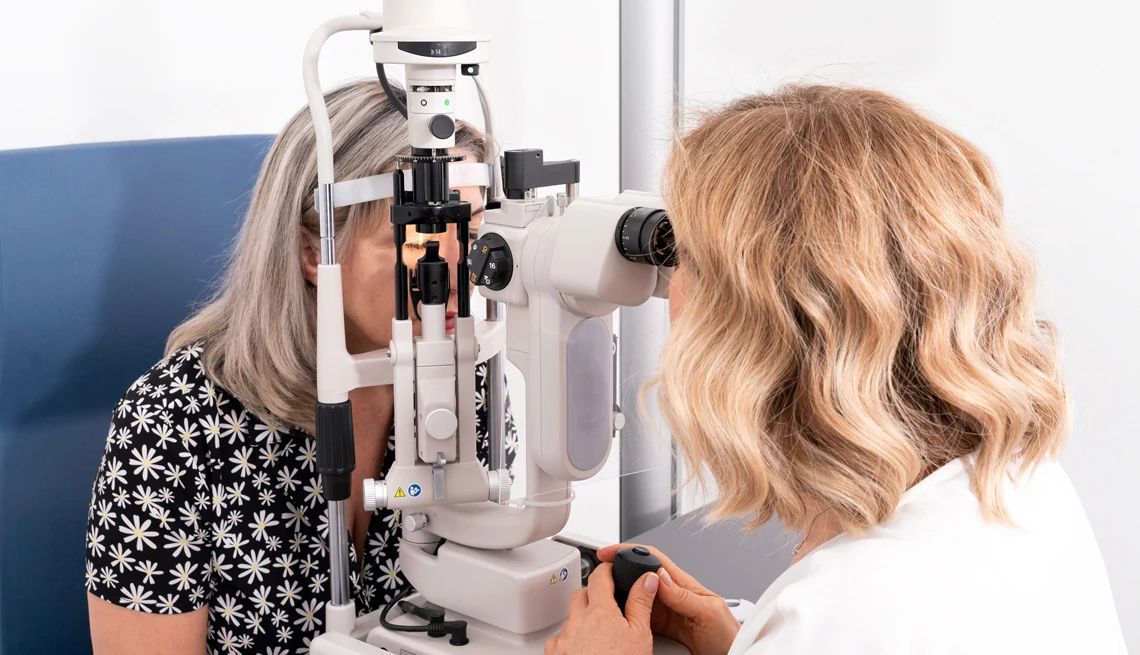
When Are Dry, Irritated Eyes a Sign of Thyroid Eye Disease?
- Select a language for the TTS:
- UK English Female
- UK English Male
- US English Female
- US English Male
- Australian Female
- Australian Male
- Language selected: (auto detect) - EN
Play all audios:
Getty Images Facebook Twitter LinkedIn In this story What is Graves’ disease? • What is thyroid eye disease (TED)? • Stages of TED • Symptoms of TED • Quality-of-life issues • Easing eye
discomfort • Ways to treat TED
If you look in the bathroom mirror and see red, swollen, irritated eyes staring back, you might be tempted to blame seasonal allergies, but in some cases an autoimmune condition called
thyroid eye disease, also known as Graves’ eye disease, may be to blame.
What is Graves’ disease?Graves’ disease is an autoimmune disorder that causes the thyroid to produce more hormones than the body needs (hyperthyroidism). According to the National Institute of Diabetes and
Digestive and Kidney Diseases, nearly 1 in 100 Americans have Graves’ disease. Hyperthyroidism is more common in women between the ages of 20 and 50. But studies show that 1 to 3 percent of
people over the age of 60 have hyperthyroidism. Graves’ disease is the most common cause, but 50-plus adults are also prone to toxic multinodular goiter, a condition where multiple thyroid
nodules produce excess thyroid hormone.
If you gently massage the base of your throat between your collarbones, you can feel your thyroid. It’s a butterfly-shaped gland that produces thyroxine (T4) and triiodothyronine (T3). These
hormones are like the gas that powers the engine of your metabolism, the process in which the body converts food and drinks into energy.
A patent with an abnormal enlargement of thethyroid gland Hyperthyroidism (overactive thyroid) Getty Images
In Graves’ disease, the thyroid produces harmful antibodies called thyrotropin receptor antibodies (TRAb). These antibodies signal the thyroid to make more and more T4 and T3, effectively
cutting the brakes on your metabolism.
Putting it all together, hyperthyroidism causes an abnormally fast basal metabolic rate (BMR). That’s why many people with Graves’ disease report anxiety, hand tremors, sweating, heat
intolerance, insomnia, rapid heartbeat and increased appetite.
Getty Images What is thyroid eye disease (TED)?Graves’ eye disease, otherwise known as thyroid eye disease, or TED, develops in a quarter of people with Graves’ disease. It happens when the body’s immune cells attack the muscles and
connective tissue behind the eye, causing inflammation.
Why? Researchers suspect that any place in the body that expresses a thyroid receptor can get attacked by those antibodies. The thyroid expresses thyroid receptors, of course — and it just
so happens that these receptors can also be found behind the eye.
“That provides some of the explanation for why the eyes become involved,” says Simon Pearce, a professor of endocrinology at Britain’s Newcastle University and former president of the
British Thyroid Association. “There’s some shared protein between the thyroid and the muscles and tissues behind the eye.”
Even so, people with an underactive thyroid (hypothyroidism) or even normal thyroid hormone levels can also have TED, though this occurs less often.